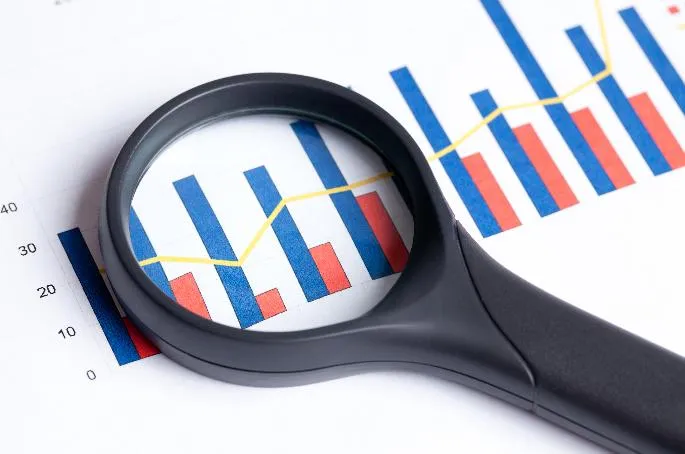
China 3Q12 GDP growth forecast at 7.4% YoY
The expected figure is down from 7.6% in 2Q as growth momentum has been decelerating.
DBS Group Research noted:
3Q12 GDP growth due this week is projected to register 7.4% YoY, down from 7.6% in 2Q. Growth momentum has been clearly decelerating in 3Q as evidenced by dwindling external demand and slower fixed asset investment growth.
External trade weakened notably in the third quarter. Exports and imports grew only 4.5% (Sep: 9.9% vs. Aug: 2.7%) and 1.6% (Sep: 2.4% vs. Aug: -2.6%) respectively in 3Q, versus 10.5% and 6.5% in 2Q, concluding the trade surplus at USD 79.5bn this quarter versus USD 68.5bn in 2Q.
Apparent pickup in fixed asset investment (FAI) growth is yet to be seen in spite of more project approvals. FAI growth for 3Q is projected to average 20.3% YTD, just 0.1% higher than in 2Q. That said, FAI growth for the full year is likely to reach just 21.0%, versus last year’s 23.8%.
One source of comfort is that cooling real estate investment is self-engineered. Official rhetoric confirmed that Beijing will maintain a firm grip on the property sector. We anticipate a more notable rebound in FAI beginning 1Q13 as the investment engine is usually revved up after leadership transition.
Looking back at the previous transition, gross capital fixed formation growth leaped from 15.6% in 2002 to 22.6% in 2003. That said, GDP growth is likely to bottom-out in 3Q, with a mild rebound beginning 4Q and extending into 1Q13.
Private consumption remains the only bright spot which has always been insulated quite well from external shocks. Nominal retail sales are expected to have grown 13.2% in 3Q (Sep est. & Aug: 13.2%), versus 13.9% in 2Q, making it the slowest quarter since 3Q06. The speedy retreat of the CPI to 1.9% in 3Q (Sep:1.9% vs. Aug: 2.0%) from 2.9% in 2Q, however, will likely lift real retail sales to 12.1% in 3Q from 11.3% in 2Q.
Looking ahead, the consumption component is likely to remain steadily resilient versus the erratic performance of net exports clouded by an ongoing murky outlook. Economic calamities in Europe and uncertainty around US growth suggest a more volatile environment ahead with downward bias in data. The PMI has already dipped below the 50 expansion-contraction threshold for two months in a row.
September’s PMI came in at 49.8, up 0.6 points from August. Except for buy-up price, all components missed the 50 mark. Given industrial production growth normally lags the PMI by about two months, it will likely edge downward further to 8.7% in September to conclude overall growth in 3Q to 8.9%, down from 9.5% registered in 2Q12.
Notwithstanding a gloomy economic backdrop, the new leadership will likely keep monetary policy prudent. PBOC chief has once again highlighted the medium term inflation risk driven by printing press in the west in the Journal of Financial Research published by the central bank.
In addition, interest rate cuts can spur surges in property prices, as seen in June and July this year. It makes no sense to loosen reins on the property market now after so many months of hard work to prevent prices from spiraling. Interest rates will therefore be on hold for the coming quarters. That said, we anticipate a much clearer roadmap for structural reforms after the 18th Party Congress. At this difficult juncture, a decisive leadership is needed.



![SBR 5 Lorem Ipsum News 2 [8 May]](https://cmg-qa.s3.ap-southeast-1.amazonaws.com/s3fs-public/styles/exclusive_featured_article/public/2025-05/a_hand_pointing_to_a_futuristic_technology_5b87c9d0e3_3.png.webp?itok=M3Hf-9XR)
![SBR 4 Lorem Ipsum [8 May Top Stories]](https://cmg-qa.s3.ap-southeast-1.amazonaws.com/s3fs-public/styles/exclusive_featured_article/public/2025-05/a_hand_pointing_to_a_futuristic_technology_5b87c9d0e3_2.png.webp?itok=2m5Wl0MX)


![Exclusive three SBR 12 Lorem Ipsum [8 May]](https://cmg-qa.s3.ap-southeast-1.amazonaws.com/s3fs-public/styles/exclusive_featured_article/public/2025-05/a_hand_pointing_to_a_futuristic_technology_5b87c9d0e3_11.png.webp?itok=8kn_UIfA)
![SBR 3 Lorem Ipsum [ Exclusive 2]](https://cmg-qa.s3.ap-southeast-1.amazonaws.com/s3fs-public/styles/exclusive_featured_article/public/2025-05/a_hand_pointing_to_a_futuristic_technology_5b87c9d0e3_1.png.webp?itok=YCyjLegJ)
![SBR 2 Lorem Ipsum [8 May]](https://cmg-qa.s3.ap-southeast-1.amazonaws.com/s3fs-public/styles/exclusive_featured_article/public/2025-05/a_hand_pointing_to_a_futuristic_technology_5b87c9d0e3_0.png.webp?itok=_cKD-29o)

![Video [Event News]](https://cmg-qa.s3.ap-southeast-1.amazonaws.com/s3fs-public/styles/event_news_featured_article/public/2025-05/screenshot-2025-05-08-at-4.58.53-pm_0.png.webp?itok=Kud35sMs)
![Event News SBR 9 Lorem Ipsum [8 may]](https://cmg-qa.s3.ap-southeast-1.amazonaws.com/s3fs-public/styles/event_news_thumbnail/public/2025-05/a_hand_pointing_to_a_futuristic_technology_5b87c9d0e3_8.png.webp?itok=DTh_dbYp)
![Event News SBR 9 Lorem Ipsum [8 May]](https://cmg-qa.s3.ap-southeast-1.amazonaws.com/s3fs-public/styles/event_news_thumbnail/public/2025-05/a_hand_pointing_to_a_futuristic_technology_5b87c9d0e3_7.png.webp?itok=vzDAzb6V)
![Event News SBR 8 Lorem Ipsum [8 May]](https://cmg-qa.s3.ap-southeast-1.amazonaws.com/s3fs-public/styles/event_news_thumbnail/public/2025-05/a_hand_pointing_to_a_futuristic_technology_5b87c9d0e3_6.png.webp?itok=jvHFc4P6)
![Video [Event News]](https://cmg-qa.s3.ap-southeast-1.amazonaws.com/s3fs-public/styles/video_thumbnail/public/2025-05/screenshot-2025-05-08-at-4.58.53-pm_0.png.webp?itok=yZnI0YBb)
![Video 1 SBR [8 May]](https://cmg-qa.s3.ap-southeast-1.amazonaws.com/s3fs-public/styles/video_thumbnail/public/2025-05/screenshot-2025-05-08-at-4.58.53-pm.png.webp?itok=9AAeRz_k)

 Advertise
Advertise

